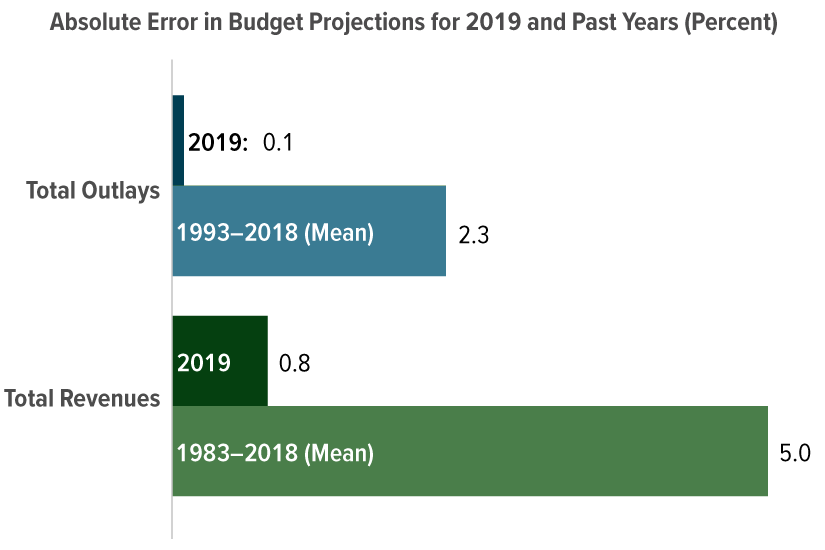In 2016, members of the reserve component received an average of $12,500 in benefits (measured in 2018 dollars) under the Post-9/11 GI Bill. This report describes their use of those benefits and compares how the reserve and regular components use their benefits.
CBO Blog
In June 2019, CBO updated its long-term budget projections, including projections of the Social Security system’s finances. CBO compares those projections with its 2018 projections and with the Social Security trustees’ latest projections.
In its 2018 projections for fiscal year 2019, CBO overestimated revenues and underestimated outlays by 0.8 percent and 0.1 percent, respectively. CBO’s projection of the federal budget deficit in 2019 was less than the actual amount by 0.1 percent of GDP.
The federal budget deficit was $342 billion for the first two months of fiscal year 2020, CBO estimates, $36 billion more than the deficit recorded during the same period last year.
As part of a continuing effort to increase transparency, CBO has improved the section of our website that contains cost estimates with several new features.
In 2016, the military services allocated $25 billion to base operations support (BOS). CBO explores characteristics of bases and the mission of the units they serve, analyzing the relationship between those characteristics and BOS costs.
CBO Director Phill Swagel attended an event at the University of Maryland honoring Professor Allen Schick, who is retiring after teaching there for many years, and spoke about the conflicts that have arisen in federal budgeting, the important nonpartisan role that CBO plays, and the fiscal challenges facing our nation.
In fiscal year 2019, the budget deficit totaled $984 billion—$205 billion more than the shortfall recorded in 2018. Measured as a share of GDP, the deficit increased to 4.6 percent in 2019, up from 3.8 percent in 2018 and 3.5 percent in 2017.
This tool demonstrates the effects of policies that would increase the federal minimum wage. Users can also create custom policy options to examine how different approaches to changing the minimum wage would affect earnings, employment, family income, and poverty.
CBO estimates that the Navy’s plan to modernize and operate its sealift ships over the next 30 years would cost roughly $39 billion. In this report, CBO explores four alternatives that would vary in cost from $34 billion to $40 billion.










